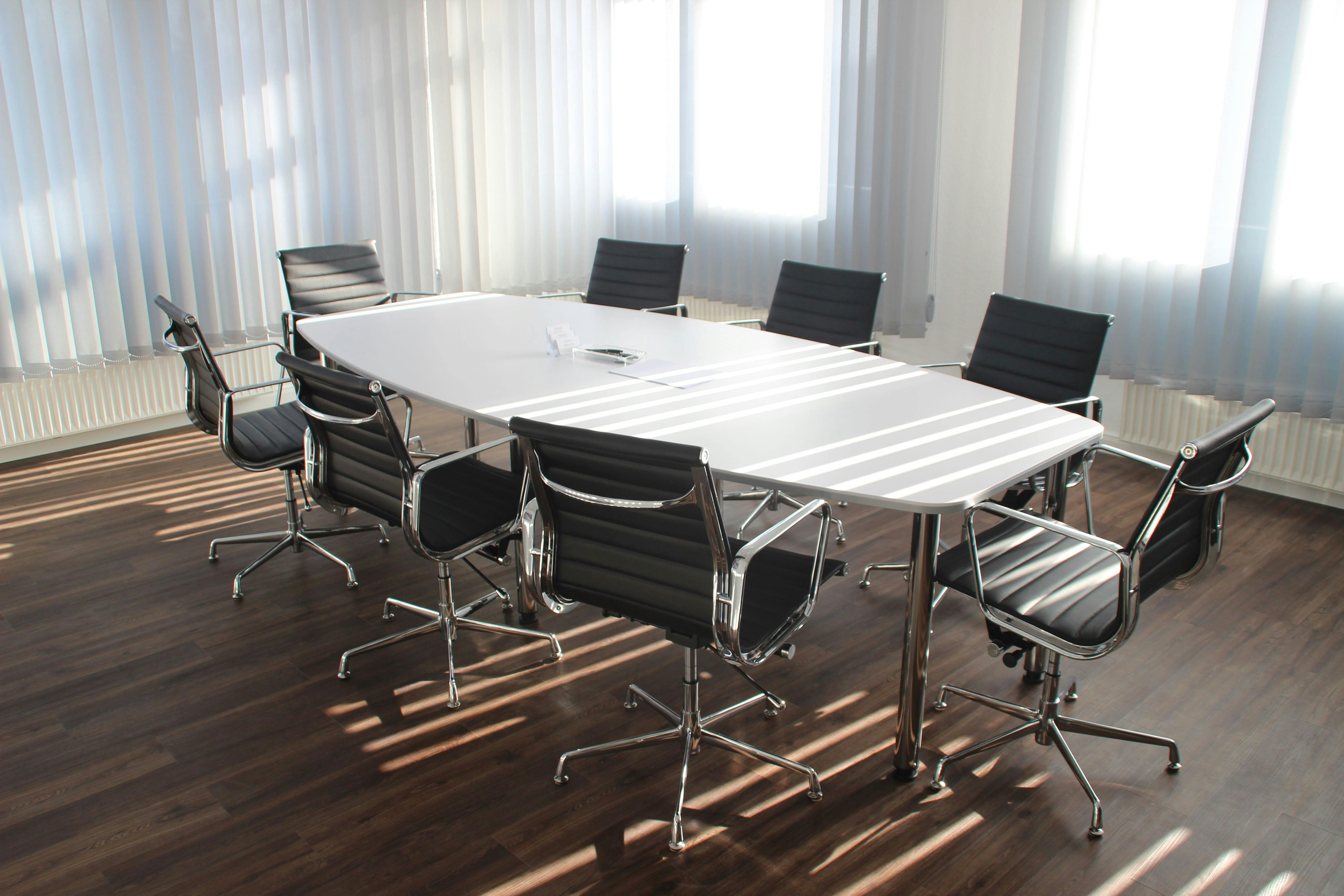

How do you write an effective meeting agenda?
A meeting agenda is essential for an organised and productive meeting. It serves as a roadmap and enables good time management. A good agenda sets out the objectives of the meeting and lists the points to be covered. In this article, we'll look at the characteristics of agendas, the steps involved in drafting them, examples and advice on how to structure them.
What is a meeting agenda?
The meeting agenda tells your staff what will be discussed at the meeting. It lists the subjects and themes to be discussed by the team or the actions to be taken during the meeting.
This document is sent to your employees in advance of the meeting. It enables each of them to prepare for the meeting. In this way, they will know what they are expected to do on the day. If a participant is unable to attend, he or she will pass on all the details to the person chairing the meeting so that it can go ahead anyway.
What's more, by setting an agenda, you respect your teams' time. This determines the objective and the subjects to be dealt with or not. When a meeting is organised without this roadmap, it is disorganised and time-consuming.
Its role is to structure the meeting by encouraging everyone to work together. It prevents people from straying from the defined objective and encourages concentration.

The characteristics of a well-designed agenda
Aims and objectives of the meeting
When creating the agenda, you need to identify the objective of the meeting in terms of what needs to be achieved. This should be specific and achievable within the time available. It must be clearly stated. For example, to
- Taking stock of the work of the works council;
- Draw up a sales plan to increase sales by 10% by 30/12;
- Approve the marketing budget for Q3.
Everyone knows what needs to be achieved by the end of the meeting.
Clarity of the subjects to be discussed
Once the objective of the meeting agenda has been defined, the subjects to be discussed must be listed. These should all be linked to the main objective. This list of topics to be discussed frames the meeting and avoids discussing ancillary subjects. If we take the objective "To approve the marketing budget for the 3rd quarter", these topics might be :
- Review of 2nd quarter marketing results ;
- Approval of the strategy to be adopted in Q3;
- Definition of performance indicators for Q3;
- Approval of the budget.
Estimating the discussion time for each topic
In order to set the total duration of the meeting, it is important to estimate the time needed to discuss each topic. Some points may be dealt with more quickly, while others may require more discussion. It's better to allow more time than not enough. Set time blocks for each subject. During the meeting, make sure you keep to the time allotted for each of them.
Once the length of the meeting has been set, it is easier to plan.
Steps for drawing up an effective meeting agenda
1. Identify the purpose of the meeting
For a meeting to be effective, all the points to be dealt with must be grouped around the same objective. This gives direction to the session. The objective should clearly express what needs to be done at the end of the meeting. Formulate it using a question or an action verb.
Let's take an example. The accounts department wastes far too much time entering and managing invoices. An employee has put forward the idea of using software to automate these tasks. The objective identified could be: "How can we improve time management in the accounts department?
2. Involve participants in the preparation
When you submit the meeting agenda to your employees, you should also ask them to participate. You can do this by asking them to contribute by putting their name next to one of the points to be discussed. This will encourage them to think ahead and contribute to the meeting.
If they are invited to speak, they will have no choice but to make proposals. Each point should require the particular expertise of a member of the meeting. It is this collaboration that enables rapid progress to be made and the defined objective to be achieved.
3. List the issues to be addressed
Listing the points to be addressed in the form of questions helps to generate commitment. Propose open-ended questions to stimulate discussion. If we go back to our previous example, these questions could be :
- What are the difficulties facing the accounts department?
- Which tasks have been identified as the most time-consuming?
- Is it possible to automate these tasks and how?
- What are the relevant regulations?
- Which software should be chosen to automate time-consuming tasks?
The answers need to be discussed together, but each point can be introduced by one of the employees, as we saw earlier.
4. Identify the purpose of each activity
Each activity discussed during the meeting is linked to the main objective. There are 3 different types of activity:
- Information ;
- Discussion;
- Decision.
The information point provides an opportunity for the meeting leader or the expert intervening on the subject to provide all the information needed to carry out the activity. This removes any questions and ensures that each participant has all the necessary data.
The discussion requires the active participation of all those present at the meeting. The aim is to listen to the arguments to help the decision being made.
Finally, the decision is approved by a vote.
5. Estimating the time for each subject
Let's take another example to better understand how to estimate the time needed for each subject. A company seminar is to be organised. The aim of the agenda is to "Approve the quotes for the seminar on 10 November". The subjects to be dealt with are :
- Overall seminar budget: information
- Presentation of quotations for room hire;
- Presentation of quotations for the caterer;
- Presentation of quotes for guest accommodation.
- Questions;
- Approval of quotes.
| Subject to be dealt with | Time allowed |
|---|---|
| Overall seminar budget | 5 minutes |
| Presentation of room hire quotes | 10 minutes |
| Presentation of quotations for catering | 10 minutes |
| Presentation of quotes for accommodation | 10 minutes |
| Questions | 10 minutes |
| Vote | 5 minutes |
6. Identify who will lead the discussions on each topic
The person who leads the discussions on each topic is the person who is likely to deal with it effectively. The meeting itself is led by a designated facilitator who follows the agenda. This is the person who will outline the purpose of the meeting and introduce the various topics.
Using our example, the moderator will present the overall budget for the seminar. He will then give the floor to each member of staff who has been responsible for drawing up the estimates. He will present them and ask the other participants for their opinions.
7. Conclude each meeting with a review
At the end of the meeting, the conclusion should be an opportunity to summarise the decisions taken in line with the initial objective. A brief review of each point is carried out, bringing the session to a close. Then comes the time for a collective assessment of the quality of the meeting. What went perfectly? What could be improved for the next meeting?
Take a little time to discuss and note the areas for improvement. These are points to focus on so that you can be more effective next time. Repeated difficulties can include: time management, subjects that are not specific enough or difficult decision-making.
Examples of effective meeting agendas
Example of a project meeting
A project meeting generally takes place between the various stages of a project. Several meetings are scheduled to review the progress of the project. The aim is to find out exactly what stage the project has reached, what the next steps are and what tasks remain to be completed. Here is an example of an agenda for a project meeting:
- Date and location ;
- Purpose
- People present;
- Purpose of the meeting ;
- Attendees;
Progress of the project: information on the budget allocated, the stages completed and validated, points to be reviewed, etc;
Communication on the project: a round-table discussion with exchanges of information and an update on bottlenecks and solutions envisaged;
Planning: allocation of tasks according to deadlines and the solutions chosen, question and answer session.
Example of a last-minute meeting
Last-minute meetings are sometimes organised. They are organised as a matter of urgency, leaving little time for preparation. However, it is important to :
- Define an objective and the subjects to be discussed in advance, even if the meeting is decided the day before!
- Set the duration of the meeting.
- If preparation time is almost non-existent, it's best to start by recapping the situation and why it needs to be dealt with urgently.
- Go round the table and let everyone have their say.
- Leave time for a question and answer session.
- Move on to making a decision that responds to the objective on the agenda.
Example of a team meeting

A team meeting is essential to make timely progress on the common objectives of a group of people working on the same subject. It provides an opportunity to take stock of the tasks carried out by each member of the team, to ask for everyone's opinion and to seek the team's approval.
Here is an example of an agenda for a team meeting:
- Date ;
- Participants ;
- Purpose of the meeting ;
- Reminder of project tasks;
- Topic 1: information, activities, discussion: person in charge of this sequence;
- Topic 2: activities, activities, discussion: person in charge of this section;
- Approval or vote.
Bonus tips to maximise the effectiveness of your meetings with a well-structured agenda
For an effective meeting :
- Follow the agenda to the letter;
- Respect the time blocks defined for each activity;
- Appoint someone to take notes. This allows you to summarise at the end of the meeting and makes it easier to write up the minutes.
- Follow up the meeting: the note-taker is responsible for taking the minutes. Tasks are assigned to the team members concerned. Give everyone a deadline and arrange a new meeting if necessary.
Conclusion:
To draw up an effective meeting agenda:
- Clearly define the purpose of the meeting;
- List the topics to be discussed;
- Identify the purpose of each activity;
- Set the estimated time for each topic;
- Send out the agenda in advance, encouraging the team to participate.
By following these points, you can be sure of running a successful meeting.
With Deskeo, the office design expert, you can design your spaces for an incomparable quality of life at work.

Contact Us
We find your Perfect fit!
